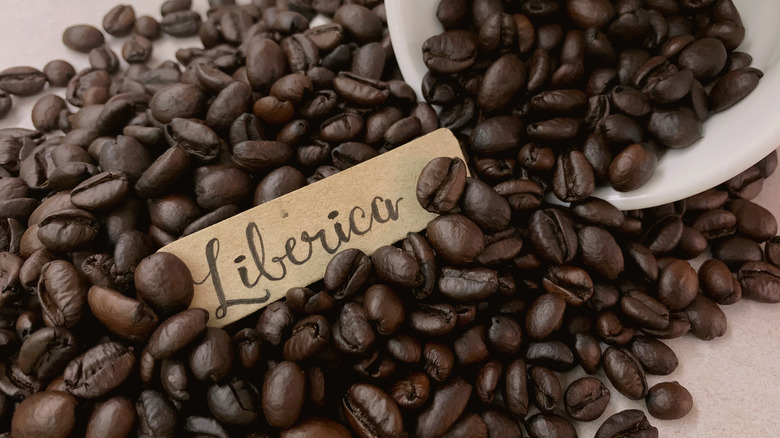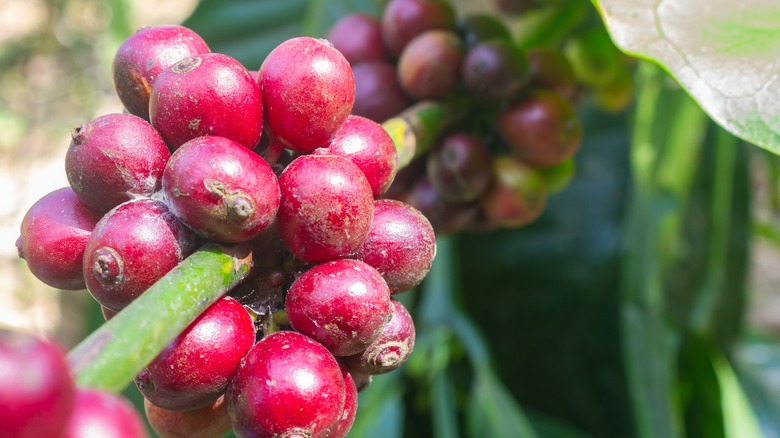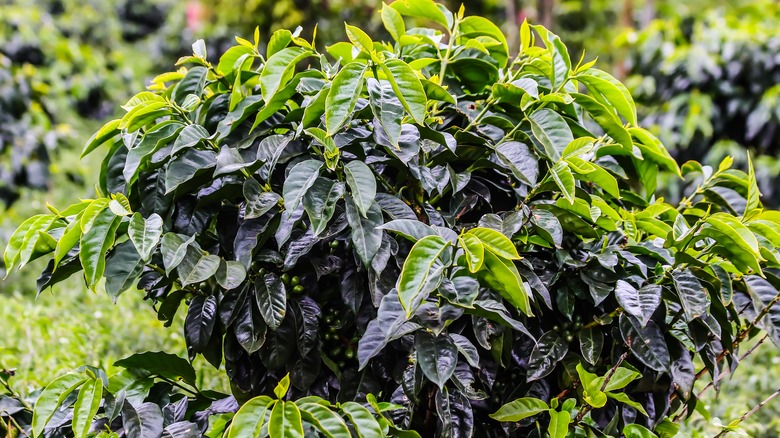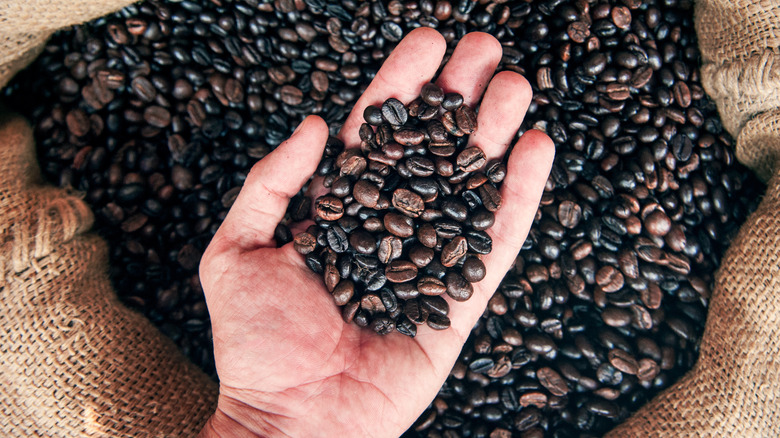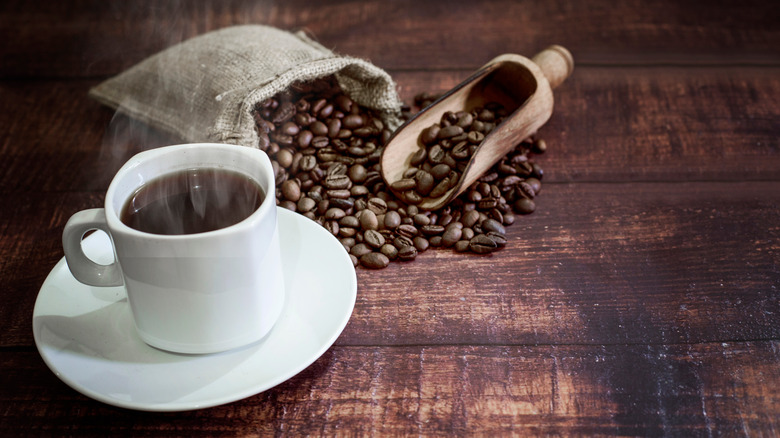What Makes Liberica Coffee Unique?
When you reach for your morning cup of joe, it can be many things: A pick-me-up, a savior, a meditative singing bowl, fuel, or simply the affirmation that another day has begun and you are here to enjoy it. But, in a more literal sense, your morning coffee is also the agricultural product of a particular region. Many java enthusiasts swear by a favorite single-origin bean, as opposed to a coffee blend like "light roast." Does your palate crave an acidic Ethiopia? Or a smooth, caramel-forward Brazil?
Other single-origin coffee beans are even more luxurious. When Proud Mary coffee shop started carrying the award-winning Black Jaguar Geisha coffee made from Panama-grown beans, it sold for $150 a cup. Floral, fruity Rwandan coffee is regarded as one of the highest-quality beans in the world. Today, we're deep-diving into one specific type of coffee beans you've probably seen before but never given much thought beyond a glance in a supermarket aisle. Introducing: Liberica coffee.
It's regarded as the third-most-popular type of commercially-available coffee bean, after Arabica and Robusta. Combined, Arabica and Robusta beans account for 98% of all the coffee in the world (via Home Grounds). The remaining 2% is Liberica — and its rarity isn't the only thing that makes it a unique bean.
Liberica is a star of the Philippines
The authority at the Philippine Coffee Board states that the Philippines is one of several countries in the world that produces all four commercial types of coffee: Arabica, Robusta, Liberica, and Excelsa. Although, there's some dispute surrounding classification. Excelsa is technically a subcategory of Liberica coffee — and so is another subcategory called Barako.
Whatever name you call it, agriculturalists have been growing coffee in the Philippines since the 1700s, and the country stands as the primary world producer of Liberica beans. The first Liberica seeds were planted in the Filipino municipality Amadeo, Cavite, in 1876, about 40 years before Amadeo even officially became a town. (In fact, Amadeo is nicknamed the "Coffee Capital of the Philippines.") But, believe it or not, Liberica coffee didn't originate from the Philippines at all despite the coffee's strong ties to the country.
A globetrotting origin story
Per popular lore, Liberica coffee originated in Liberia, West Africa, where it was discovered by Spanish explorers who brought it to the Philippines to find a lasting home. But, records of the crop's history are few, and the coffee's path from Africa to Asia might have taken a different route.
Pacita Juan of the United Nations' Food and Agricultural Organization supports a different theory. According to Perfect Daily Grind, Juan considers it most likely that Liberica traveled from Liberia to Ethiopia, then to the Middle East, and finally to Southeast Asia, when many Islamic travelers were making the pilgrimage to Malaysia. Thereafter, a wave of crop disease called the "coffee rust" ripped out much of the world's Arabica supply, up to 90% in 1890. The coffee rust affected Brazil, Africa, and Java, making the Philippines the only remaining coffee-growing country in the world.
The bean fell out of favor in the U.S. market due to territorial disputes between the countries, but Liberica made its permanent comeback in 1995. Still, despite its enduring popularity and cemented position in the commercial coffee lineup, Liberica remains a rare, difficult-to-find coffee.
What does Liberica coffee taste like?
So, what's all the hype about Liberica coffee beans? Their unique flavor is as rare as the beans themselves. In a word, the taste of Liberica coffee is "complex." The flavor is smoky and woody, with slight notes of stone fruit. The mouthfeel and tastes are robust — so much so that Liberica's unique, earthy profile has earned the coffee mixed reviews.
In its natural form, Juan compares the flavor of Liberica beans to jackfruit, a popular plant-based meat alternative. When the beans are washed, the fruitier, floral flavors come out, as in the Excelsa category; the Barako variety is woodier and spicy. Despite the fact that its flavor leans on the savory side, opening up a bag of Liberica beans conjures a wave of distinct floral, fruity aroma. Coffee Affection recommends brewing in a French press, pour-over, or espresso machine using a medium-fine grind size to showcase the beans' dimensional flavor profile.
Liberica coffee beans are bigger, bolder, and better quality
In many ways, Liberica is the brew of the iconoclast. Liberica coffee beans tote a distinct uneven, asymmetrical shape and carry a lower caffeine content than Arabica or Robusta beans. In addition to their incomparable flavor, distinctive aroma, and a limited number of global growing sites, Liberica beans are also very dark brown (almost black), and they're massive.
The beans aren't the only large part — unlike other coffee shrubs, Liberica grows on trees that can grow to around 60 feet tall. The leaves of the plants are each about a foot wide. But, the Liberica plants' massive size dictates a self-perpetuating quality, says Juan. The towering heights of the cherries necessitate hand-picking; no industrial harvesting practices here. Liberica beans are typically cultivated on small family-owned farms, which means smaller plots and greater attention to detail.
Plus, because farmers have fewer trees to tend, and those trees produce smaller yields compared to other coffee-growing plants, farmers are able to work at slower paces and focus on careful harvesting practices and closer crop monitoring. Thanks to Liberica's rarity and consumer demand, farmers still turn the same commercial profit as they might with a larger crop.
